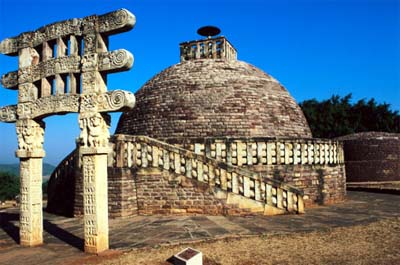Dec 21, 2025
Dec 21, 2025
 One definition of a great civilization is the magnificence of its architectural legacy, and India is surely among the foremost. The country is dotted with the remains of ages gone by, many world famous like the Taj and Qutab Minar, and some still cloaked in obscurity, off the tourist circuit, waiting to be 'discovered', but architectural gems nevertheless.
One definition of a great civilization is the magnificence of its architectural legacy, and India is surely among the foremost. The country is dotted with the remains of ages gone by, many world famous like the Taj and Qutab Minar, and some still cloaked in obscurity, off the tourist circuit, waiting to be 'discovered', but architectural gems nevertheless.
14-Dec-2000
More by : Ashish Nangia